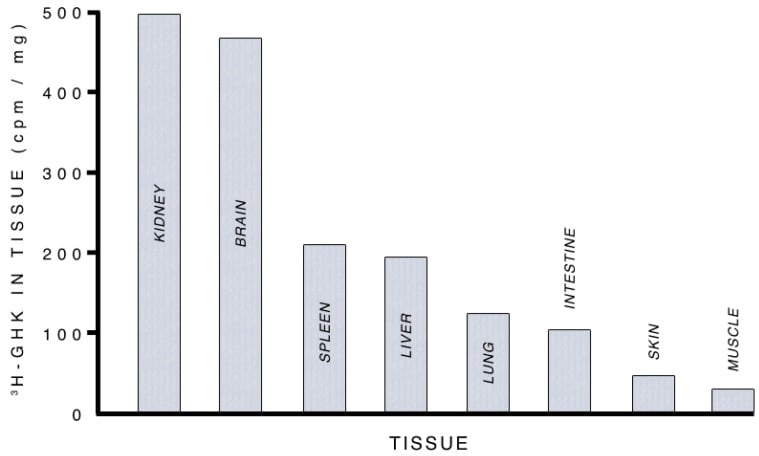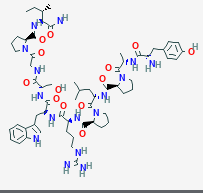0
Home
/
GHK-Cu 50mg*10vials Per Kit
GHK-Cu 50mg*10vials Per Kit
$ 160.00
-
36 people are viewing this right now
Quantity
ADD TO CART
Inquiry
-
FREE Shipping for orders over $200
-
Ships today if ordered and paid by 12 PM PST. (Except Saturdays & Sundays)
Trusted Store
not_doman
99%
Issue-Free
Secure
Checkout
$10K
ID Protect
GUARANTEED SAFE CHECKOUT









Important Notices:
· This product is sold for scientific research purposes only.
· Product is provided as a lyophilized (freeze-dried) powder in a sealed, sterile vial.
· The quantity on the label refers to the total amount of product inside each vial.
· Additional lab supplies are required for conducting research such as bacteriostatic water for reconstitution, syringes & needles to draw from the vials, and alcohol prep pads for sanitizing vial stoppers prior to needle insertion.
· Vial appearance, label, seal and cap colors may vary from product photos.
· This product is sold for scientific research purposes only.
· Product is provided as a lyophilized (freeze-dried) powder in a sealed, sterile vial.
· The quantity on the label refers to the total amount of product inside each vial.
· Additional lab supplies are required for conducting research such as bacteriostatic water for reconstitution, syringes & needles to draw from the vials, and alcohol prep pads for sanitizing vial stoppers prior to needle insertion.
· Vial appearance, label, seal and cap colors may vary from product photos.
-
Detail
GHK-Cu
GHK-Cu is a naturally occurring peptide first isolated from human blood plasma. It has since been identified in urine and saliva as well. Research into GHK-Cu has found the short peptide to have substantial benefits in wound healing and immune function. It has anti-aging properties and has been found to suppress free-radical damage, increase protein synthesis, fight bacteria, and increase the health of skin and skin fibroblasts.
Structures
Sequence: Gly-His-Lys.Cu.xHAc
Molecular Formula: C14H23CuN6O4
Molecular Weight: 340.384 g/mol
PubChem CID: 73587
CAS Number: 89030-95-5GHK-Cu Research
1. GHK-Cu and Skin Healing
GHK-Cu is a natural part of human blood and, as such, has been found to play an integral role in skin regeneration pathways. Research in skin cultures has found that GHK stimulates the synthesis and breakdown of collagen, glycosaminoglycans, and other extracellular matrix components like proteoglycans and chondroitin sulfate. At least part of this effect is mediated through the positive recruitment benefits that GHK-Cu has on fibroblasts, immune cells, and endothelial cells. The peptide draws these cells to the site of injury and appears to coordinate their activity in repairing the damage.
GHK-Cu is a common component of skin-care and cosmetic products. It improves elasticity of the skin while tightening and firming. It has also been shown to reduce damage due to sunlight, reduce hyperpigmentation, and reduce the appearance of fine lines and wrinkles. The ability of GHK-Cu to modulate collagen synthesis is important in reducing the appearance of scars, preventing hypertrophic healing from taking place, smoothing rough skin, and repair the structure of aged skin. These roles of GHK-Cu are mediated partly though its ability to boost levels of transforming growth factor-Β. It is likely that the peptide works through several different biochemical pathways and that it has effects and the level of gene transcription.
Research in mice shows that GHK-Cu increases the rate of healing following burn by as much as 33%. It appears that besides recruiting immune cells and fibroblasts to the site of injury, GHK-Cu also encourages the growth of blood vessels. Burned skin is often slow to regrow blood vessels due the cauterization effect, so these findings open up a new pathway for improving wound care in burn units and accelerating healing.
2. GHK-Cu and Bacteria
The invasion of tissue by foreign pathogens is one of the primary reasons that wounds are slow to heal or do not heal at all. Bacterial and fungal infections are particularly problematic in burn patients and in those with compromised immune systems (e.g. diabetes, HIV). GHK-Cu, when combined with certain fatty acids, creates a potent antimicrobial compound that is active against a number of bacteria and fungi known to complicate wound healing.
Research in diabetic patients has shown that GHK-Cu is superior to standard care regimens alone in the treatment of diabetic ulcers. Patients given both standard care and GHK-Cu showed a ~40% increase in wound closure and a 27% decrease in rates of infection compared to control groups. Similar results were seen in patients with ischemic open wounds.
3. GHK-Cu, Cognition and Nervous System Function
The death of neurons due to degenerative diseases like Alzheimer’s is poorly understood. This makes it difficult to develop treatments and those that are available are generally of limited efficacy. Research, however, suggests that GHK-Cu can counter the age-associated decline in neuron function that often underlies these diseases. Research shows that GHK-Cu can improve angiogenesis in the nervous system, boost nerve outgrowth, and reduce inflammation in the central nervous system. There is even evidence that GHK-Cu can reset pathological gene expression and help to recreate a state of health in dysfunctional systems.
GHK-Cu is found in high concentrations in the brain, though levels of the peptide decline with age. There is a thought, among scientists, that GHK-Cu may protect nervous system tissues against natural insults such as gene dysregulation and that it is the decline in GHK-Cu with age, and not the onset of new disease processes, that actually leads to neurodegeneration.

GHK-Cu Levels in various tissues
Research in rats indicates that one possible mechanism by which GHK-Cu protects brain tissue is by preventing apoptosis. This action appears to be mediated through the well-known miR-339-59/VEGFA pathway, which is active following brain bleeds and stroke. In the rat models, GHK-Cu improves neurological deficits in the brain, reduce swelling, and inhibited the death of neurons that is commonly bought about by overexpression of miR-339-5p.
4. GHK-Cu and Side Effects of Chemotherapy
Research in mice shows that GHK-Cu can protect the lungs against fibrosis that occurs following therapy with the cancer drug bleomycin. This could pave the way for using GHK-Cu as a chemotherapy adjuvant that allows doses of these life-saving medications to be increased without risk of increased side effects. The study when a step farther, than usual, by identifying the likely pathway by which GHKC-Cu protects against fibrosis. It appears that the peptide regulations TNF-alpha dn IL-6 levels, both of which act as inflammatory molecules and affect the extracellular matrix and smooth muscle of the lung. By reducing inflammation in the lungs, GHK-Cu prevents fibrotic remodeling from taking place and improves collagen deposition.
Similar benefit of GHK-Cu in protecting lungs was found in mouse models of acute respiratory distress syndrome (ARDS), an inflammatory lung condition that can develop rapidly and be fatal. ARDS is associated with injury, infection, and certain drugs like those used in chemotherapy. Once again, GHK-Cu appeared to mediate its effects through decreased TNF-alpha and IL-6 expression.
5. GHK-Cu and Pain Reduction
In rat models, the administration of GHK-Cu had a dose-dependent effect on pain-induced behavior. The peptide appears to have analgesic effects that are produced through increased levels of the natural painkiller L-lysine. Similar research has found that the peptide can also increase levels of L-arginine, another analgesic amino acid. These findings open up new avenues for pain control that do not rely on addictive opiate medications or NSAIDs, which have been found to have negative effects on the heart.
GHK-Cu exhibits minimal side effects, low oral and excellent subcutaneous bioavailability in mice. Per kg dosage in mice does not scale to humans. GHK-Cu for sale at Peptide Sciences is limited to educational and scientific research only, not for human consumption. Only buy GHK-Cu if you are a licensed researcher.
-
Customer Reviews
 ke****H.
ke****H.
Good quality 💪🏻
 Cust********PKE
Cust********PKE
A+
 An*****us
An*****us
Work really good
 JO****.
JO****.
Great product
 To****.
To****.
Wow.
 Ve****ca
Ve****ca
Works just like it should






